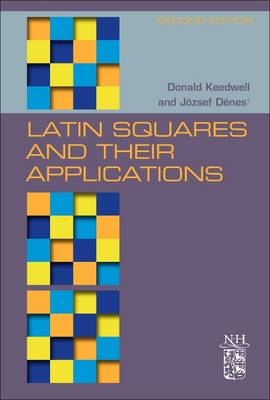
Latin Squares and their Applications
North-Holland (Verlag)
978-0-444-63555-6 (ISBN)
Using an engaging narrative style, this book provides thorough coverage of most parts of the subject, one of the oldest of all discrete mathematical structures and still one of the most relevant. However, in consequence of the huge expansion of the subject in the past 40 years, some topics have had to be omitted in order to keep the book of a reasonable length.
Latin squares, or sets of mutually orthogonal latin squares (MOLS), encode the incidence structure of finite geometries; they prescribe the order in which to apply the different treatments in designing an experiment in order to permit effective statistical analysis of the results; they produce optimal density error-correcting codes; they encapsulate the structure of finite groups and of more general algebraic objects known as quasigroups.
As regards more recreational aspects of the subject, latin squares provide the most effective and efficient designs for many kinds of games tournaments and they are the templates for Sudoku puzzles. Also, they provide a number of ways of constructing magic squares, both simple magic squares and also ones with additional properties.
He has spent almost the whole of his teaching career at the University of Surrey. Since retirement from teaching he has been an Honorary Senior Research Fellow at that Institution. He is the author of some ninety research papers and two books, most related in some way to latin squares. He is a Foundation Fellow of the Institute of Combinatorics and their Applications and a member of the Editorial Board of /Quasigroups and Related Systems". He was the _x000C_rst secretary of the British Combinatorial Committee and continued to serve in that capacity for 8 years. Also, he was one of the organizers of the 1991 British Combinatorial Conference and editor of its Proceedings. He is probably best known internationally as one of the authors of /Latin Squares and their Applications" of which the present book is a re-written and updated new edition.
1. Elementary properties 2. Special types of latin square 3. Partial latin squares and partial transversals4. Classification and enumeration of latin squares and latin rectangles5. The concept of orthogonality6. Connections between latin squares and magic squares7. Constructions of orthogonal latin squares which involve re-arrangement of rows and columns 8. Connections with geometry and graph theory 9. Latin squares with particular properties 10. Alternative versions of orthogonality11. Miscellaneous topics
AppendicesThe present state of the problems New problems
| Erscheint lt. Verlag | 24.7.2015 |
|---|---|
| Sprache | englisch |
| Maße | 152 x 229 mm |
| Gewicht | 820 g |
| Themenwelt | Mathematik / Informatik ► Mathematik ► Graphentheorie |
| ISBN-10 | 0-444-63555-6 / 0444635556 |
| ISBN-13 | 978-0-444-63555-6 / 9780444635556 |
| Zustand | Neuware |
| Haben Sie eine Frage zum Produkt? |
aus dem Bereich
